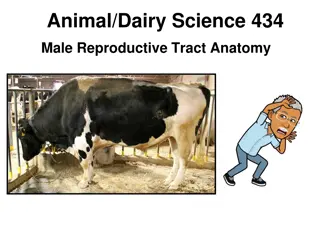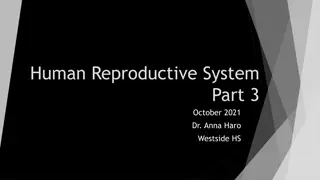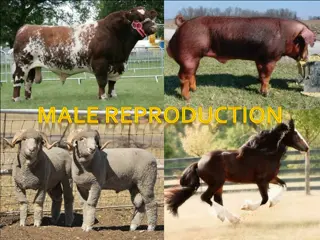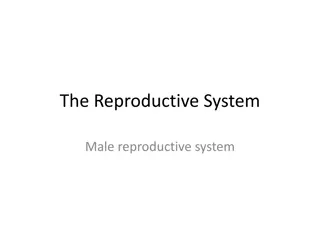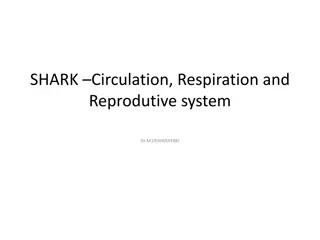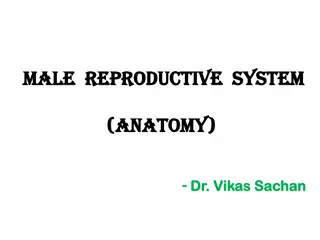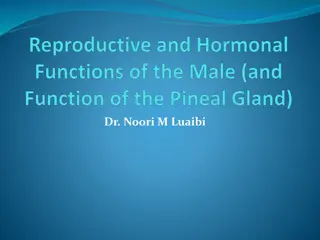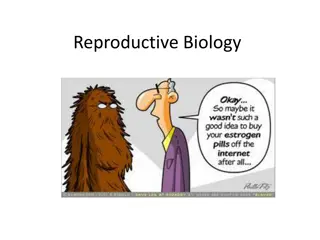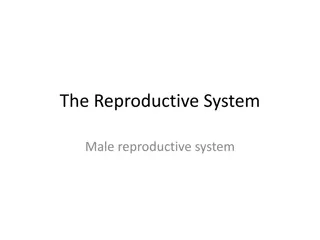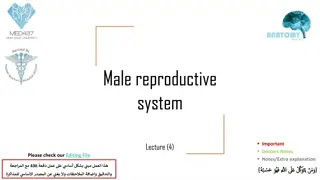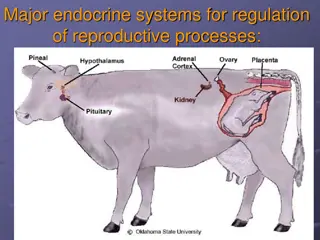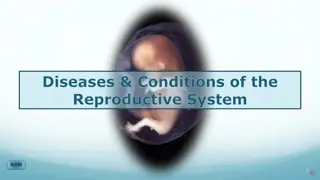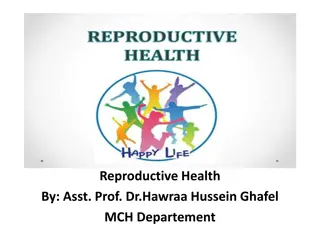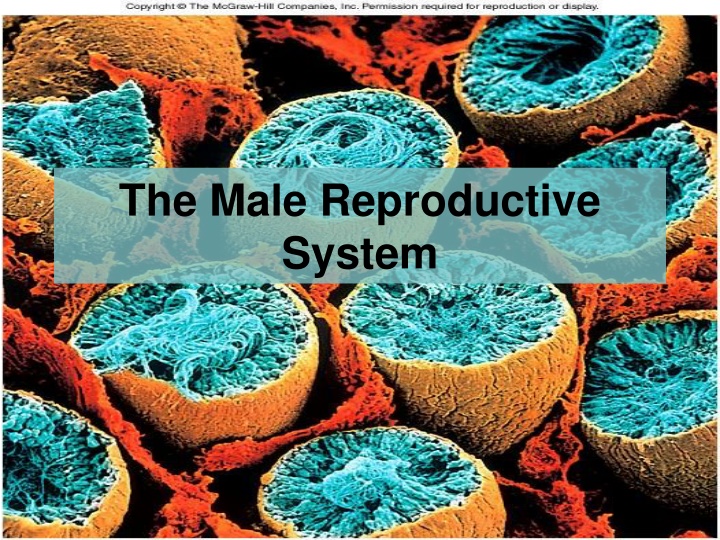
The Male Reproductive System and Puberty Changes
Explore the male reproductive system, from primary and secondary sex organs to the functions of sex hormones. Learn about puberty changes, male sex characteristics, and the impact of aging on male sexuality. Discover the role of testes, scrotum, male urethra, and more in the reproductive process. Delve into topics like testicular thermoregulation, spermatogenesis, and the brain-testicular axis to gain insights into male reproductive health and development.
Download Presentation

Please find below an Image/Link to download the presentation.
The content on the website is provided AS IS for your information and personal use only. It may not be sold, licensed, or shared on other websites without obtaining consent from the author. If you encounter any issues during the download, it is possible that the publisher has removed the file from their server.
You are allowed to download the files provided on this website for personal or commercial use, subject to the condition that they are used lawfully. All files are the property of their respective owners.
The content on the website is provided AS IS for your information and personal use only. It may not be sold, licensed, or shared on other websites without obtaining consent from the author.
E N D
Presentation Transcript
The Male Reproductive System 27-1
Objectives: By the end of this session, students will be able to: Differentiate between primary and secondary sex organs. Discuss functions of sex organs. Recognize pubertal changes. Identify functions of male sex hormone. Explain effect of aging on male sexuality.
Overview of Reproductive System Primary sex organs produce gametes (testes) Secondary sex organs - ducts, glands, penis Secondary sex characteristics develop at puberty pubic, axillary and facial hair, sweat glands, body morphology and low-pitched voice in males In response to hormones
Scrotum Pouch holding testes divided into 2 compartments by median septum Spermatic cord travels up from scrotum to pass through inguinal canal contains testicular artery, vein, nerve and lymphatics 27-4
Testicular Thermoregulation Sperm not produced at core body temperature cremaster muscle = pulls testes close to body dartos muscle wrinkles skin reducing surface area of scrotum lifts it upwards
Testes Oval organ, 4 cm x 2.5 cm Sustentacular cells promote sperm cell development 27-6
Male Urethra Regions: prostatic, membranous and penile --- totals 20 cm long
Puberty and Climacteric Reproductive system dormant till puberty 10-12 in most boys. Puberty period from onset of gonadotropin secretion until first menstrual period or first ejaculation of viable sperm Adolescence ends when person attains full adult height
Brain-Testicular Axis Hypothalamus produces GnRH Anterior pituitary to secretes LH stimulates interstitial cells to produce testosterone FSH stimulates sustentacular cells to secrete androgen-binding protein that stimulate spermatogenesis Spermatogenesis takes 64 to 72 days
Regulation of Male Androgens (Sex Hormones)
Other Effects of Testosterone Enlargement of secondary sexual organs penis, testes, scrotum, ducts, glands and muscle mass enlarge hair, scent and sebaceous glands develop stimulates erythropoiesis and libido During adulthood, testosterone sustains libido, spermatogenesis and reproductive tract
Aging and Sexual Function Decline in testosterone secretion peak secretion at 7 mg/day at age 20 declines to 1/5 of that by age 80 Rise in FSH and LH secretion after age 50 produces male climacteric (menopause) mood changes, hot flashes and illusions of suffocation Erectile dysfunction 20% of men in 60s; 50% of those in 80s
Semen or Seminal Fluid 2-5 mL of fluid expelled during orgasm 60% seminal vesicle fluid, 30% prostatic, 10% sperm normal sperm count 50-120 million/mL Other components of semen fructose - energy for sperm motility fibrinogen causes clotting enzymes convert fibrinogen to fibrin fibrinolysin liquefies semen within 30 minutes prostaglandins stimulate female peristaltic contractions spermine is a base stabilizing sperm pH at 7.2 to 7.6

